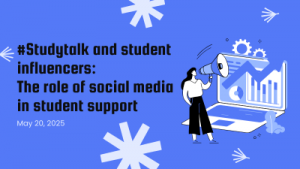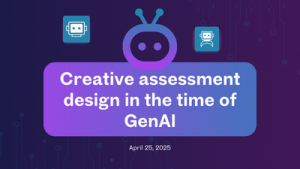JIN Hanwei (Mario), TENG Xu (Ted) and ZENG Zijia (Scarlett)
In the era of post-digitalization, higher education institutions have fully integrated digital technologies into their teaching, and the COVID-19 pandemic has further hastened this shift. As such, the digital divide becomes wider. Originally, the digital divide refers to the gap between people who can access technologies and those who cannot (West, 2011), which has turned into a metaphor manifesting those disadvantaged in utilizing technologies (Cullen, 2001). As generative artificial intelligence emerges, this divide has become more complex in the post-digital era, encompassing access and the seamless integration and daily utilization of technology. During the COVID-19 pandemic, we returned to a mountain village in our hometown of Guizhou, where we witnessed first-hand the severe impact of the digital divide. It disproportionately hindered students at all educational levels from accessing fair learning opportunities. This situation highlights that these challenges transcend immediate educational policies and delve deeper into broader socio-economic status. Bridging this digital divide entails building an inclusive and equitable society, considering that digital access and literacy are and will remain fundamental to developing the global economy and society (World Economic Forum, 2024).
The digital divide remains closely tied to socio-economic disparities in today’s post-digital landscape. Research and statistics show that the digital divide has a robust correlation with socioeconomic status; this identifies groups of people with low literacy, income, and education levels. (Cullen, 2001). School of Education of American University (2022) shows that students with access to the internet will perform better when they enter college since universities embrace technology at a promising rate, while those who are digitally divided encounter obstacles and spend more hours to achieve learning objectives. The digital divide in higher education can inhibit students’ performance, competitiveness, and learning experience in the long run and exacerbate a deeper digital divide and socio-class consolidation loop. So, the question is, is it possible to find a way to narrow the digital divide in higher education practice? Perhaps strategic course design can be a potential tool.
Strategic Course Design as a Tool to Bridge the Digital Divide
The design of higher education curricula is paramount for bridging the digital divide. Good or effective course design ensures that all students have equal opportunities to succeed in study, regardless of their backgrounds and abilities for digital access. In a post-digital context, digital literacy extends beyond merely knowing how to use technology; it encompasses critical thinking about technology’s role and implications, enabling students to navigate and utilize digital environments for their learning adeptly.
The study by Villalobos et al. (2024) sheds light on specific self-regulated learning strategies, such as goal-setting, self-monitoring, and adaptive time management, which have been shown to narrow the digital divide in blended learning environments. These strategies equip students with diverse needs to become more autonomous learners, effectively utilizing available technology to access educational resources. Peterson and Elglaly (2024) emphasize that educators need to recognize and bridge the knowledge gap between the theoretical aspects of computer science education and the practical applications of digital accessibility. Their research underscores the importance of integrating accessibility principles into the curriculum, thus ensuring that all students, regardless of their technical background, can participate on an equal footing. To this end, the authors provide examples such as designing navigable course content for screen readers and incorporating assistive technologies into the learning environment.
In addition, integrating technology into course design can significantly enhance student engagement and learning outcomes. Barth-Fagan (2024) highlights how strategic course design incorporating technology has ensured continuous learning during the COVID-19 pandemic. The study describes how a curriculum with adaptive learning technologies and online collaborative tools facilitated uninterrupted learning and addressed disparities in digital access among students. Diversified and interactive courseware, resulting from various teaching methods, not only improves students’ learning interest and sense of achievement but also embodies the post-digital principle of seamlessly integrating technology into the educational experience.
Conclusion
To tackle the digital divide problem and promote educational equity, curricula in higher education need to be at the center of any strategy. With carefully designed curricula, it is possible to ensure equal chances of success for every student by promoting digital equity, encompassing the physical availability of technology (digital access) and inclusive practices that ensure all students can use these resources effectively (digital inclusion). Providing technology alone is insufficient; curricula must cultivate students’ digital literacy—the ability to use technology but the capacity to harness it for educational enhancement in a post-digital world. This goes beyond mere exposure to technology; it involves developing skills that enable students to effectively utilize digital resources and engage with innovative educational methods. This approach also aligns with the goal of educational equity, which transcends mere tool access to include value-based educational opportunities.
We urge higher education decision-makers to prioritize inclusive course design, supporting educators in bridging the digital divide and fostering a more inclusive and fair society where every student can achieve success in the digital era.
(We gratefully acknowledge the invaluable guidance and collaboration of Dr. Jisun Jung, Dr. Juuso Henrik Nieminen, and Dr. Zhu Yanzhen in developing this work.)
Reference
Access and skills training: These actions will help us close the digital divide effectively. (2024, January 16). World Economic Forum. https://www.weforum.org/agenda/2024/01/the-action-that-needs-to-be-taken-now-to-close-the-digital-divide/
Barth-Fagan, C. S. (2024). A Case Study of Technology Integration at a Community College During a Disruption of Learning Due to a Global Pandemic.
Cullen, R. (2001). “Addressing the digital divide”, Online Information Review, Vol. 25 No. 5, pp. 311–320. https://doi.org/10.1108/14684520110410517
Peterson, A., & Elglaly, Y. (2024). Implementing Impact: A Lesson on mySQL Databases and Accessibility. Retrieved from https://cedar.wwu.edu/wwu_honors/776/
School of Education of American University (2022, October 26). Understanding the digital divide in education. https://soeonline.american.edu/blog/digital-divide-in-education/
Villalobos, E., Pérez-Sanagustín, M., Azevedo, R., Sanza, C., & Broisin, J. (2024). Exploring Manifestations of Learners’ Self-Regulated Tactics and Strategies Across Blended Learning Courses. IEEE Transactions on Learning Technologies.
West, J. C. (2011). Without a net: Librarians bridging the digital divide. Libraries Unlimited.



